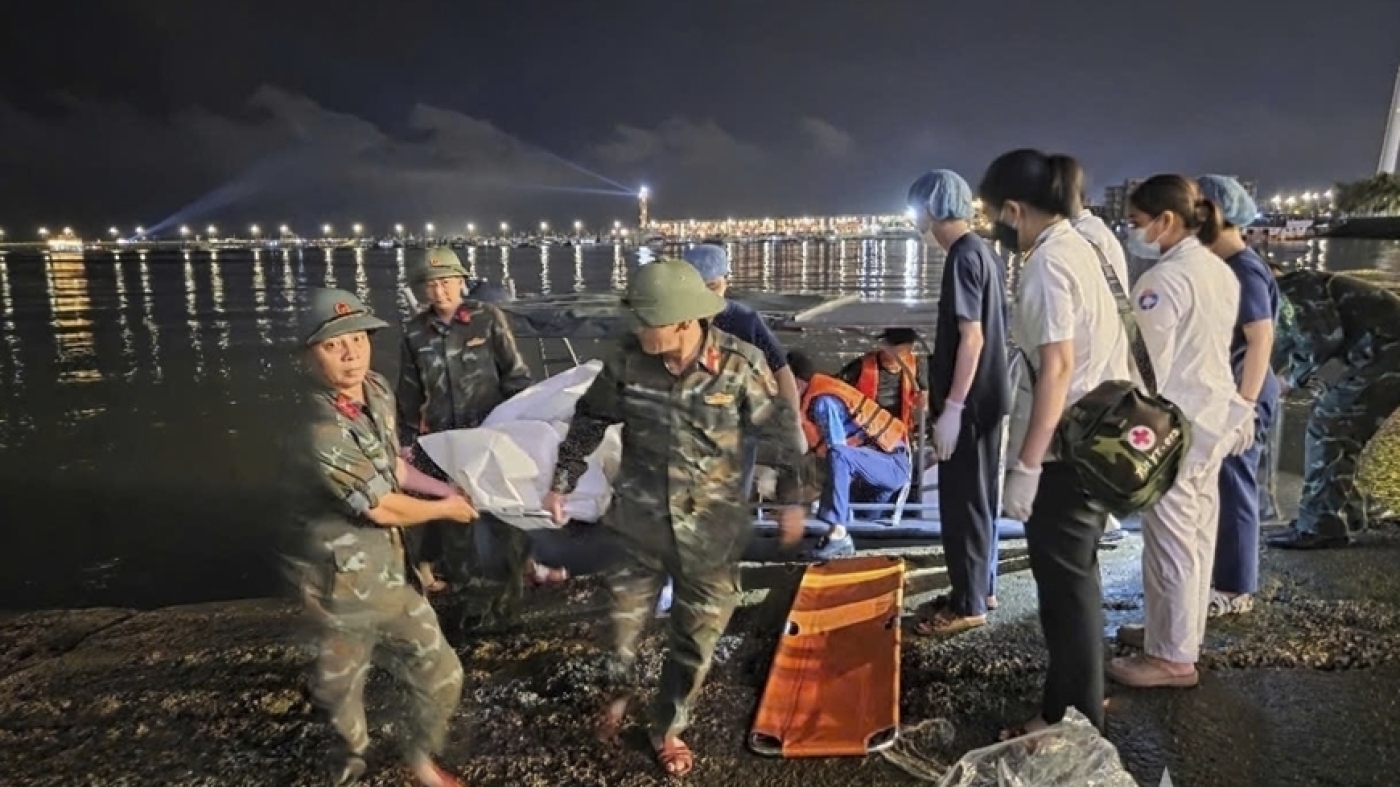The Ha Long Bay Tragedy: A Wake-Up Call for Maritime Safety
A Sudden Storm, a Shattered Peace
The tranquil waters of Ha Long Bay, a UNESCO World Heritage site renowned for its emerald waters and towering limestone karsts, became the stage for a devastating tragedy on a seemingly ordinary Saturday afternoon. The *Wonder Seas*, a tourist boat carrying 48 passengers and five crew members, capsized during a sudden and violent thunderstorm, claiming the lives of 34 people. The incident has sent shockwaves through Vietnam’s tourism industry, raising critical questions about safety regulations, weather forecasting, and emergency response protocols.
The Unfolding Disaster
The *Wonder Seas* had embarked on what was intended to be a serene sightseeing excursion, a journey through one of the world’s most breathtaking natural wonders. However, the idyllic setting quickly turned treacherous as a thunderstorm swept through the area, unleashing strong winds and torrential rain. The boat, caught in the storm’s fury, capsized, sending passengers and crew into the turbulent waters. Rescue workers launched a desperate search and rescue operation, managing to save 11 people, including a 14-year-old boy who was trapped for four hours. The grim reality of the tragedy was revealed as the bodies of 34 victims were recovered from the water and surrounding areas.
Investigating the Causes
The Ha Long Bay tragedy has sparked a wave of grief and concern, prompting investigations into the circumstances that led to the capsizing. Several critical questions are being raised:
Weather Forecasting and Warnings
Were adequate weather warnings issued in advance of the thunderstorm? If so, were these warnings effectively communicated to boat operators and tourists? The suddenness of the storm suggests a potential failure in forecasting or dissemination of information. Effective weather forecasting and timely communication of warnings are crucial for ensuring the safety of tourists and local operators.
Boat Safety Standards
Was the *Wonder Seas* properly equipped with safety gear, including life jackets and emergency communication devices? Were these devices readily accessible to passengers? Overcrowding and inadequate safety equipment have been contributing factors in similar maritime disasters worldwide. Ensuring that tourist boats are equipped with the necessary safety gear and that passengers are aware of how to use it is essential for preventing such tragedies.
Emergency Response Capabilities
How quickly did rescue teams respond to the distress call? Were they adequately equipped and trained to handle such a large-scale maritime emergency? The success of rescue operations hinges on rapid response and effective coordination. Investing in improved emergency response capabilities and training for rescue teams is crucial for saving lives in the event of a maritime disaster.
Regulatory Oversight
Were safety regulations in Ha Long Bay rigorously enforced? Were there sufficient inspections of tourist boats to ensure compliance with safety standards? Lax enforcement can create a dangerous environment for both tourists and local operators. Stricter regulations and more frequent inspections are needed to ensure that tourist boats are seaworthy and adequately equipped.
The Unique Challenges of Ha Long Bay
Ha Long Bay’s unique geography, while stunning, also presents challenges to maritime safety. The narrow channels between the limestone karsts can create unpredictable wind patterns and strong currents. Sudden thunderstorms, common in the region, can quickly transform calm waters into treacherous seas. These factors underscore the need for stringent safety measures and constant vigilance.
Adding to the complexity, the area has previously experienced similar incidents. Last year, 30 vessels sank at boat lock areas in the coastal Quang Ninh province along Ha Long Bay after Typhoon Yagi brought strong wind and waves, further highlighting the region’s vulnerability to severe weather events.
The Human Cost
Beyond the statistics and the investigations, the Ha Long Bay tragedy represents a profound human loss. Families have been torn apart, and dreams have been shattered. Each of the 34 victims was a person with their own story, their own hopes, and their own loved ones. Their absence leaves an unfillable void in the lives of those who knew them. The 11 survivors, while fortunate to be alive, will carry the emotional scars of this traumatic experience for years to come. The psychological impact of witnessing such a horrific event can be devastating, requiring long-term support and counseling.
A Call for Change
The Ha Long Bay disaster must serve as a catalyst for change. A thorough review of safety protocols, weather forecasting capabilities, and emergency response procedures is urgently needed. Stricter regulations must be implemented and enforced to ensure that tourist boats are seaworthy and adequately equipped. Investment in improved weather monitoring technology and communication systems is essential to provide timely warnings of impending storms. Training for boat operators and crew members should be enhanced to equip them with the skills and knowledge to handle emergency situations.
The tourism industry in Vietnam, and particularly in Ha Long Bay, must prioritize safety above all else. A reputation for safety and reliability is crucial for attracting and retaining tourists. Cutting corners on safety to maximize profits is a short-sighted strategy that can have devastating consequences.
Remembering and Moving Forward
The Ha Long Bay boat tragedy is a stark reminder of the power of nature and the importance of preparedness. As Vietnam mourns the loss of the 34 victims, it must also commit to learning from this tragedy and taking concrete steps to prevent similar incidents from happening in the future. The memory of those who perished should inspire a renewed dedication to safety and a commitment to protecting the lives of all who visit and work in this beautiful, but sometimes unforgiving, corner of the world.







